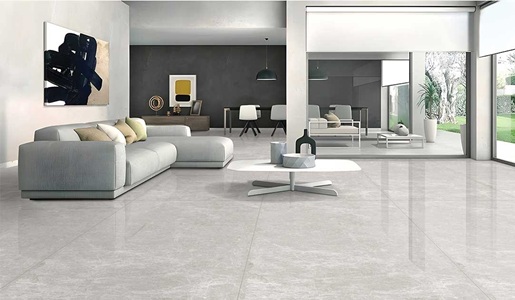Tiles are a vital component in modern construction, used for flooring, walls, kitchens, and bathrooms. Among the most popular options in India are ceramic tiles and vitrified tiles. While both add aesthetic appeal and functionality, they differ in composition, durability, and maintenance requirements. Knowing how to identify ceramic and vitrified tiles is essential for homeowners, builders, and interior designers to make the right choice for their projects.

1. Understanding Ceramic and Vitrified Tiles
a) Ceramic Tiles
- Made from natural clay, water, and other minerals, ceramic tiles are baked at high temperatures.
- They have a porous body, which is often glazed to add color, shine, and protection.
- Ceramic tiles are affordable, easy to install, and suitable for light to moderate traffic areas like walls and bedrooms.
b) Vitrified Tiles
- Vitrified tiles are made by mixing clay with silica, quartz, and feldspar, then firing at extremely high temperatures.
- This process creates a non-porous, glass-like surface, making vitrified tiles hard, dense, and water-resistant.
- They are ideal for high-traffic areas, commercial spaces, and outdoor flooring, as they are highly durable.
2. Physical Characteristics
a) Appearance and Finish
- Ceramic Tiles: Usually have a glossy or matte glazed surface, which can come in various colors and patterns. The design is often on the top layer only, so the back may show a different shade.
- Vitrified Tiles: Exhibit a uniform color and design throughout the tile, even on edges and the back. The surface is smooth, polished, and reflective in most cases.
b) Water Absorption
- Ceramic Tiles: Porous, with water absorption around 0.5–3% for glazed types, making them prone to stains and moisture damage if used outdoors.
- Vitrified Tiles: Highly vitrified with water absorption less than 0.1%, making them resistant to water, stains, and frost.
c) Strength and Durability
- Ceramic Tiles: Suitable for low to medium traffic areas, can chip or crack under heavy load.
- Vitrified Tiles: Extremely hard and strong, suitable for heavy traffic areas and industrial use.
3. Tests to Identify Ceramic vs Vitrified Tiles
a) Water Test
- Place a few drops of water on the tile surface.
- Ceramic tiles absorb water slowly (especially unglazed), leaving a wet mark.
- Vitrified tiles do not absorb water; droplets remain on the surface.
b) Chipping Test
- Gently tap the tile edge with a coin or small hammer.
- Ceramic tiles may chip easily, especially at corners.
- Vitrified tiles are resistant to minor chipping due to higher density.
c) Weight Test
- Vitrified tiles are heavier because of their compact, non-porous structure.
- Ceramic tiles are lighter due to their porous body.
d) Edge and Surface Check
- Ceramic tiles: Edges may be slightly rough; design may not continue on the sides.
- Vitrified tiles: Smooth, precise edges; design is uniform and continuous throughout the tile.
Quick Comparison Table: Ceramic vs Vitrified Tiles
| Feature | Ceramic Tiles | Vitrified Tiles |
| Composition | Clay, minerals, baked at high temp | Clay, silica, quartz, feldspar, vitrified |
| Water Absorption | 0.5–3% | <0.1% |
| Surface Finish | Glazed or matte | Polished, smooth, uniform |
| Strength & Durability | Medium, may chip | Very high, resistant to impact |
| Suitable Areas | Walls, light-traffic floors | High-traffic floors, outdoors |
| Weight | Lighter | Heavier |
| Design Uniformity | Top layer design only | Uniform throughout |
Final Thoughts
Identifying ceramic and vitrified tiles requires careful observation of composition, water absorption, durability, and surface characteristics. While ceramic tiles are ideal for light-use indoor areas, vitrified tiles are preferred for heavy-duty, high-traffic, and water-prone spaces. Understanding these differences ensures the right choice for longevity, aesthetics, and functionality, whether for residential or commercial projects.